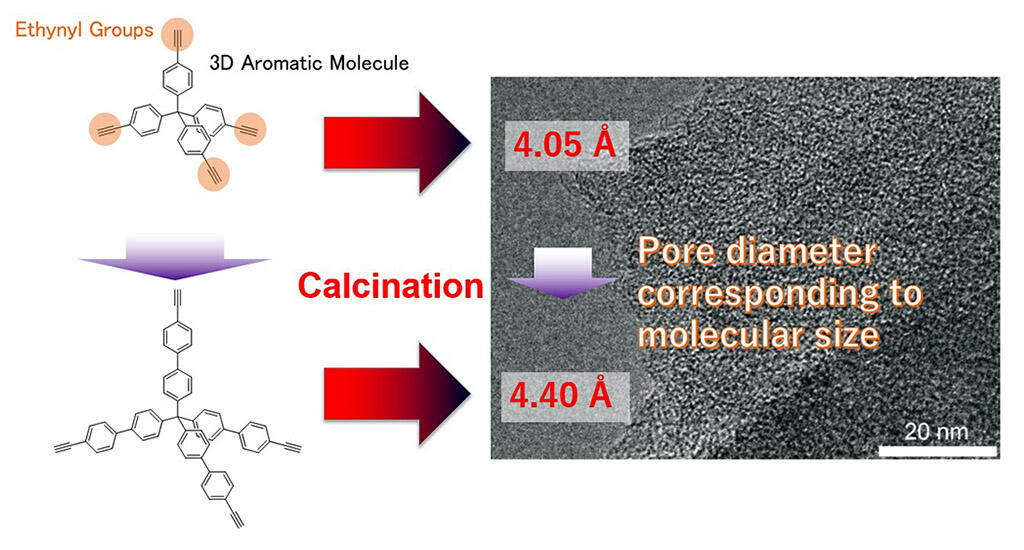The research group of Professor Tomoki Ogoshi at the Graduate School of Engineering, Kyoto University, Professor Hirotomo Nishihara at the Advanced Institute for Materials Research, Tohoku University, and Professor Yuta Nishina at the Research Core for Interdisciplinary Sciences, Okayama University, developed porous carbon, whose pore size was controlled at the molecular level only by heating.
A high temperature is required to carbonize organic molecules, the production of porous materials was difficult, and production has been limited owing to high craftsmanship requirements. To date, porous carbon has mainly been synthesized via an activation method, in which the carbon skeleton is destroyed by gas or chemicals to form pores. However, the structural change in the carbon skeleton during the preparation of the material using this method is significant, such that the original carbon skeleton is not retained. Therefore, it is difficult to control the pores at the molecular level, and advanced technology is required to obtain porous carbon with good reproducibility.
The research group logically designed the organic molecular skeleton of the carbon source and calcined the organic molecules at 900 °C in an inert gas atmosphere to obtain porous carbon with controlled pore diameters at the molecular level. In specific terms, a network polymer was formed by suitably introducing acetylene with thermal polymerization properties into the aromatic molecule. As a result of this process, porous carbon corresponding to the size of the molecule could be obtained. The spacing of the obtained carbon could be controlled at the molecular level, which meant that it could be used as a negative electrode material for sodium-ion batteries. This is because the pore size is 4.05 Å, which can fit the sodium ion with a size of 3.8 Å, allowing these ions to pass through the carbon pores. Porous carbon has more than twice the capacity of graphite, which does not possess sufficiently large pores, indicating that a molecular-level pore diameter is the key to synthesis. Professor Ogoshi concluded, "Our method is useful, as anyone can synthesize porous carbon with good reproducibility. As molecular design is possible, we would like to synthesize carbon with embedded heteroatoms and metal atoms and apply these to other areas, such as catalytic reactions."

Credit: Kyoto University
This article has been translated by JST with permission from The Science News Ltd.(https://sci-news.co.jp/). Unauthorized reproduction of the article and photographs is prohibited.




